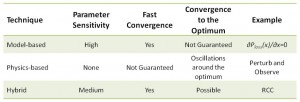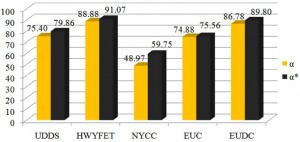Real-Time Loss Minimization in Induction Machines
Ali M. Bazzi with adviser P. T. Krein
Loss minimization in induction machines was reviewed and loss minimization techniques (LMTs) were categorized and compared. Model-based, physics-based, and hybrid LMTs can all minimize power losses in an induction machine but have different characteristics. Model-based techniques are model-dependent and thus sensitive to errors or variations in machine parameters. Their main advantage is fast convergence to the minimum power loss. Physics-based LMTs are model-independent but converge slowly and oscillate around the minimum point. Hybrid LMTs combine the best characteristics of both model- and physics-based LMTs. They are less parameter-dependent than model-based LMTs and converge faster than physics-based LMTs. Real-Time LMT comparisons are summarized in Table 1.
Among the desired LMT applications are hybrid electric vehicles (HEVs) and electric vehicles (EVs). As model-based LMTs converge fast, they can be coupled with the dynamic vehicle operation to minimize losses. An HEV simulator in the Grainger Center was used to demonstrate energy savings in the HEV under a model-based LMT. Five different driving cycles from the Environmental Protection Agency website were used and include urban cycles with abrupt acceleration and braking and highway cycles with steady-state operation. Energy efficiency (α) for these cycles under nominal and LMT operation are shown in Figure 1 where α* is the optimal energy efficiency and the acronyms on the horizontal axis refer to the five cycles. The energy efficiency is shown to increase by an average of 4 points under the LMT. A simple driving schedule was also tested on a small-scale laboratory setup and showed an energy efficiency improvement of 3.5 points under the LMT. Thus, LMTs can lead to substantial energy savings in current and future vehicle and other induction machine applications.
This research was supported by the Grainger Center for Electric Machinery and Electromechanics, Office of Naval Research under contract N00014-08-1-0397, and National Science Foundation under a Small Business Technology Transfer Grant through SmartSpark Energy Systems, Inc.

